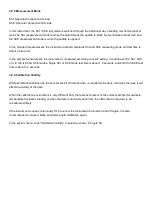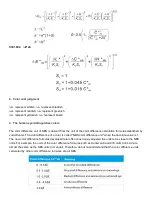
Language
Simplified Chinese, English, traditional Chinese
Operating
Environment
0~40
℃
, 0~85%RH (no condensing), Altitude < 2000m
Storage
Environment
-20~50
℃
, 0~85%RH (no condensing)
Standard
Accessory
Power Adapter, User Guide, PC Software(Download
from office website), USB cable, White and Black
Calibration Cavity, Protective Cover, Wrist strap, 8mm
flat aperture, 8mm tip aperture, 4mm flat aperture,
4mm tip aperture
Power Adapter, User Guide, PC
Software(Download from office website),
USB cable, White and Black Calibration
Cavity, Protective Cover, Wrist strap,
One aperture (8mm or 4mm)
Optional
Accessory
Micro Printer, Powder Test Box
Notes
The specifications are subject to change without notice.
Appendix
1. Color
There are three elements to observing color: lighting source, object, and observer. Changes in any of these three
will affect the color perception of the observer. When the lighting source and the observer do not change, then the
object will determine the color perception formed by the observer.
The reason why an object can affect the final color perception is that the reflection spectrum (transmission
spectrum) of the object modifies the light source spectrum. Different objects have different reflection spectra
(transmission spectrum). (Spectrum) modulation to obtain different results, because the observer does not
change, so it presents different colors, the principle is shown in the figure below.
2. Color difference formula
CIE 1976 ∆E*ab
CIE 2000 ∆E*ab
Summary of Contents for TS Series
Page 10: ...Figure 6 Standard Measurement Interface...
Page 13: ...Figure 9 Standard measurement...
Page 20: ...Figure 17 Standard Record...
Page 22: ...Figure 21 Edit Name...
Page 25: ...Figure 24 Delete Record...
Page 27: ...Figure 27 Input Search Name...
Page 34: ...Figure 35 Color Index...
Page 41: ...Figure 43 Display...
Page 43: ...Figure 46 System Settings...


































